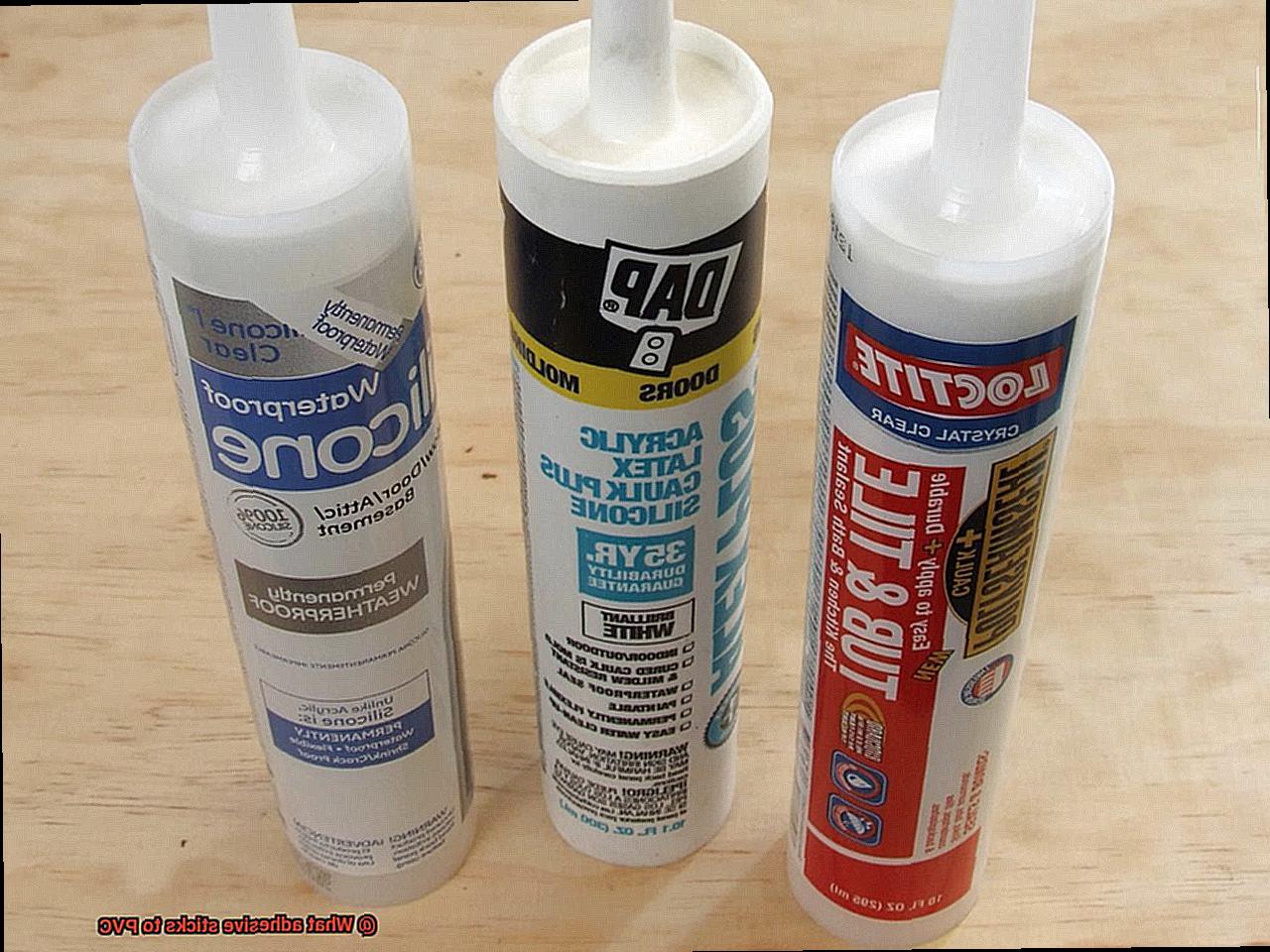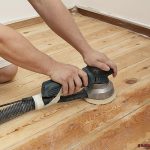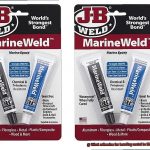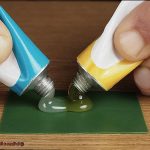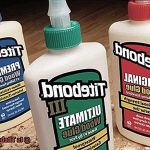Sticking materials together can be a real puzzle, especially when it comes to PVC (Polyvinyl Chloride). Its smooth and slippery surface demands adhesives specifically designed to create a strong and unbreakable bond. Lucky for us, there are several options available. So let’s dive in and uncover the advantages and disadvantages of each adhesive to ensure your PVC projects stick like glue.
First up is cyanoacrylate, also known as super glue. It’s quick, it’s strong, and it gets the job done when it comes to joining PVC. But beware, this adhesive might not be your best bet if you’re dealing with constant moisture or extreme temperatures. For those situations, epoxy adhesives come to the rescue. They offer top-notch resistance and versatility, making them perfect for marine or outdoor projects that need a reliable bond.
But what if you need flexibility? Enter polyurethane adhesive – the superhero of bendy bonds. It sticks PVC like a champ while allowing for some movement or expansion. Just keep in mind that it may take a bit longer to cure compared to other options.
Now, let’s talk about adhesives that were born for PVC – yes, they exist. These specially formulated wonders provide exceptional compatibility and can even seal out water in many cases. However, their bonding powers might be limited when it comes to sticking PVC to other materials like metal or wood.
Choosing the right adhesive depends on your project’s specific needs. For a quick fix, super glue might do the trick. But if you’re tackling a marine masterpiece, epoxy adhesives will have your back with their durable bond. Always consider factors like environmental conditions, chemical resistance, flexibility, and compatibility with other materials before making your final decision.
Stay tuned because we’re just getting started. In our next blog post, we’ll dive deeper into each adhesive type. We’ll cover application techniques, potential challenges to overcome, and even share some practical tips and tricks. So grab your PVC projects and get ready for the ultimate bonding adventure.
Solvent-Based PVC Cement
Contents
When it comes to plumbing and construction projects involving PVC pipes and fittings, a reliable adhesive is crucial for creating durable and leak-free connections. Solvent-based PVC cement, also known as PVC pipe glue, is a go-to choice for professionals and DIY enthusiasts alike. In this article, we’ll explore the advantages of using solvent-based PVC cement and the safety precautions you should take when working with this powerful adhesive.
Advantages of Solvent-Based PVC Cement:
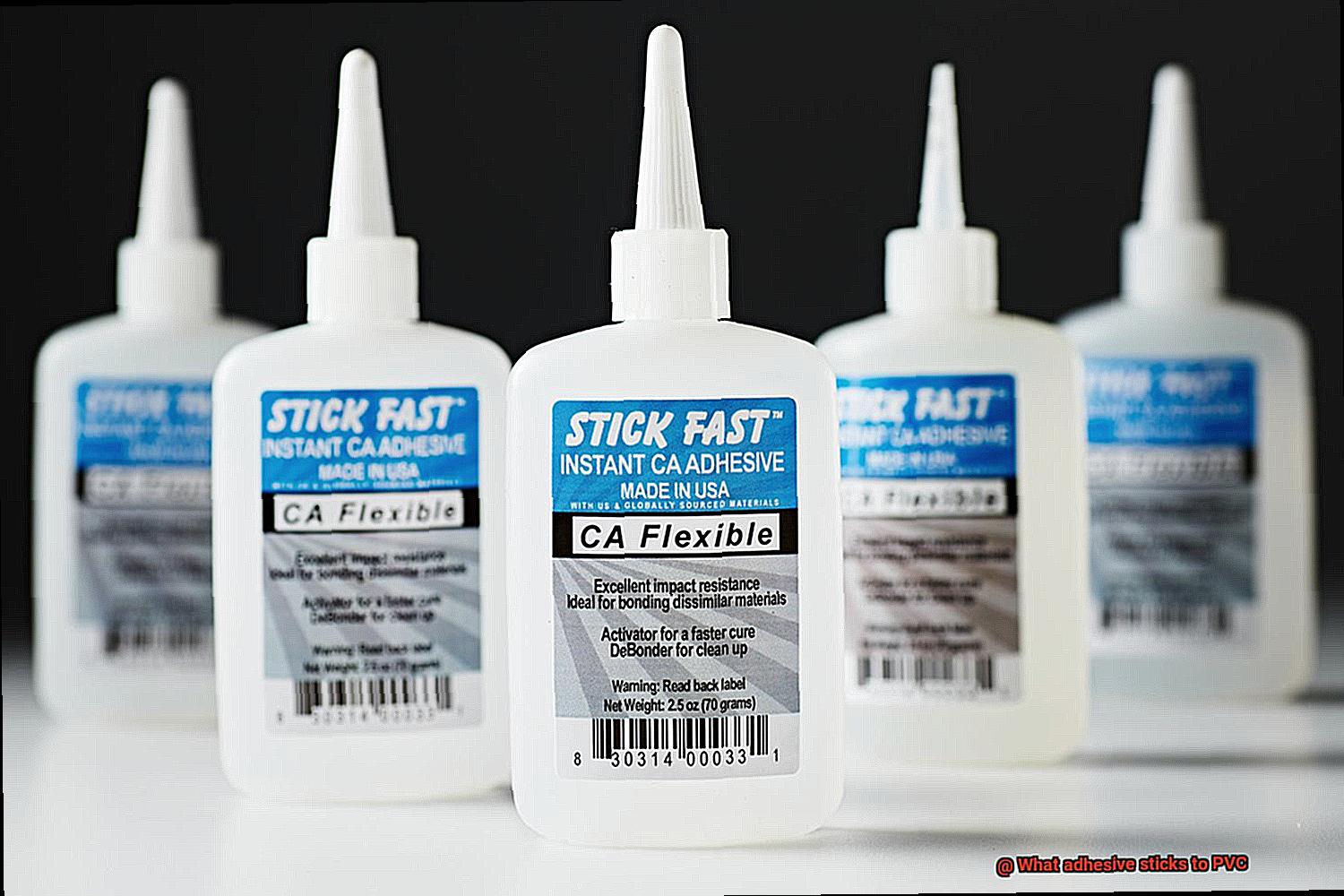
- Strong Bonding Properties: Solvent-based PVC cement creates a chemical reaction with the PVC material, resulting in a sturdy and long-lasting bond. This adhesive ensures that your connections will withstand the test of time, providing you with peace of mind.
- Easy Application: The liquid form of solvent-based PVC cement allows for easy and precise application. By following the manufacturer’s instructions, you can achieve optimum results with minimal effort. This adhesive flows smoothly onto the surfaces, ensuring even coverage for a secure bond.
- Versatility: Solvent-based PVC cement is specifically formulated for bonding rigid PVC pipes and fittings. It is compatible with various sizes and shapes of PVC components, making it suitable for a wide range of plumbing and construction projects. Whether you’re working on a residential or commercial project, this adhesive has got you covered.
Safety Precautions:
- Proper Ventilation: Always work in a well-ventilated area to avoid inhaling the fumes from the adhesive. The solvents in solvent-based PVC cement can be harmful if breathed in large quantities. Open windows or use fans to ensure fresh air circulation throughout the workspace.
- Protective Gear: Wear appropriate protective gloves and goggles to safeguard your skin and eyes from potential contact with the adhesive. This will prevent any irritation or burns that may occur during handling or accidental splashes.
- Flammability: Solvent-based PVC cement is highly flammable, so keep it away from open flames, sparks, or heat sources. Store it in a cool and dry place to reduce the risk of combustion. Safety should always be your top priority.
- Read Instructions Carefully: Follow the manufacturer’s instructions regarding application techniques, curing times, and specific safety measures. Each brand may have slight variations in their recommendations, so ensure that you are well-informed to achieve the best results and maintain safety throughout your project.
Two-Part Epoxy Adhesive
When it comes to bonding PVC materials, you need an adhesive that can handle the job with strength and durability. Enter two-part epoxy adhesive, the superhero of adhesives. This powerful adhesive consists of a resin and a hardener that, when mixed together, create a chemical reaction that forms an unbreakable bond. In this article, we will explore the process of using two-part epoxy adhesive to bond PVC materials, uncovering its versatility and outstanding performance.
Preparing the Surface:
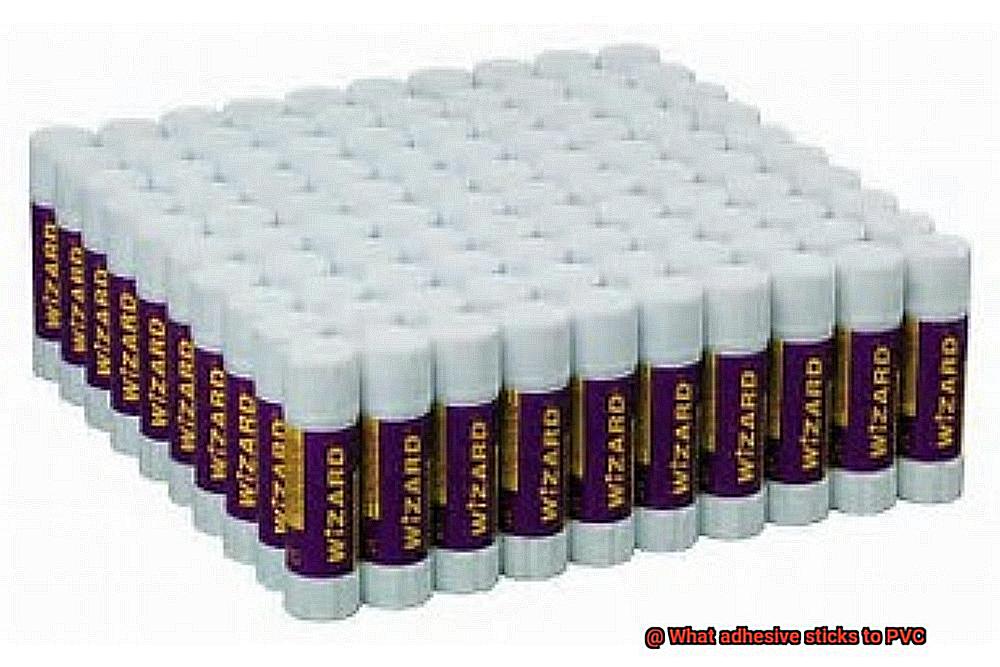
Before applying two-part epoxy adhesive to PVC, it’s crucial to prepare the surface properly. Start by ensuring the PVC surface is clean, dry, and free from any contaminants that could interfere with the bonding process. A thorough cleaning will remove any dirt, grease, or residue that may compromise the adhesive’s ability to form a strong bond. This step is essential for achieving optimal adhesion.
Mixing and Applying the Adhesive:
To achieve maximum bonding strength, it’s essential to mix the resin and hardener components of the two-part epoxy adhesive thoroughly. Follow the manufacturer’s instructions on the correct proportions for mixing the components. Typically, equal parts of resin and hardener are combined to activate the chemical reaction. Once mixed, apply the adhesive evenly to both surfaces that you want to bond together. Take care not to apply too much or too little adhesive, as this can affect the bonding strength.
Clamping and Curing:
After applying the adhesive, it’s important to provide proper clamping or support to ensure the bonded parts are held together securely during the curing process. This will prevent any movement that could compromise the bond. Depending on the specific product used, clamping may be necessary for a few minutes or several hours. The adhesive will cure over time, typically reaching its full strength after 24 hours. However, it is advisable to wait for at least 48 hours before subjecting the bonded PVC parts to any stress or load. This extra time allows for a complete and robust bond.
Versatility and Performance:
Two-part epoxy adhesive is not only suitable for bonding PVC but also a wide range of other materials including metals, ceramics, glass, and wood. Its versatility makes it a go-to adhesive for various applications. Whether you’re repairing PVC pipes, constructing furniture, or creating intricate art projects, two-part epoxy adhesive provides a reliable and long-lasting bond. Additionally, this adhesive exhibits excellent resistance to temperature fluctuations, chemicals, and moisture, making it ideal for both indoor and outdoor projects.
Cyanoacrylate Adhesives (Super Glue)
When it comes to bonding PVC materials, cyanoacrylate adhesives, better known as super glue, are the heroes of the adhesive world. With their lightning-fast drying time and Herculean bonding strength, they’re the go-to choice for a wide range of applications. In this comprehensive guide, we’ll take you through the step-by-step process of using cyanoacrylate adhesives to successfully bond PVC materials.
Step 1: Surface Preparation
Before diving into the gluing process, make sure your PVC surface is squeaky clean. Say goodbye to dust and oils by using a solvent-based cleaner or isopropyl alcohol. For an extra boost, give the surface a gentle sanding with fine-grit sandpaper to create tiny grooves that will help the adhesive penetrate the material and create a stronghold bond.
Step 2: Choose the Right Super Glue
Not all super glues are created equal. To ensure a successful bond on PVC, opt for a cyanoacrylate adhesive specifically formulated for plastic bonding. These specialized super glues contain additives that enhance adhesion and durability on plastic surfaces. Look out for products that proudly declare their compatibility with PVC or other plastic materials.
Step 3: Apply Super Glue Sparingly
Remember, a little dab will do. Apply a thin layer of super glue to one side of the PVC surface. Resist the urge to go overboard – excessive application can lead to longer drying times and potential messiness. Cyanoacrylate adhesives are speedy cures, so work efficiently and avoid exposing the glue to air for too long.
Step 4: Join the Surfaces
Now comes the moment of truth – joining the two PVC surfaces. Carefully align them and firmly press them together. Watch as the adhesive spreads evenly between the surfaces, creating a bond that’s as solid as a rock. Apply light pressure for a few seconds to allow the bond to take shape and strengthen.
Step 5: Drying Time
Cyanoacrylate adhesives are like the superheroes of drying time. Depending on the specific product and conditions, they typically dry within seconds or minutes. However, it’s best to let the bond cure fully for at least 24 hours before subjecting it to stress or load. Patience is key when it comes to achieving maximum strength and durability.
Specialized PVC Adhesives
When it comes to bonding PVC materials, specialized PVC adhesives are the go-to solution. These adhesives are specifically formulated to create a strong and durable bond with PVC components, ensuring that they remain securely attached even under stress and strain. In this section, we will explore the different types of specialized PVC adhesives and their uses in various industries.
One common type of specialized PVC adhesive is solvent-based adhesive. These adhesives contain chemicals that dissolve the surface of the PVC, allowing the adhesive to penetrate and create a strong bond. They are typically applied using a brush or applicator and require some drying time before the bond is fully formed. Solvent-based adhesives are widely used in applications such as plumbing, construction, automotive, and signage industries.
Another type of specialized adhesive for PVC is solvent-free adhesive. These adhesives are preferred for their ease of use and environmental friendliness. They do not contain harmful solvents, making them safer to handle. Solvent-free adhesives typically come in a tube or cartridge and can be applied directly to the PVC surface. They cure through chemical reaction or by evaporation of water in the adhesive, creating a strong bond. Solvent-free adhesives are commonly used in applications where fast drying time is required.
When using specialized PVC adhesives, it is important to consider the type of PVC material being bonded. Different formulations of PVC have varying levels of flexibility, rigidity, and chemical resistance. It is crucial to choose an adhesive that is compatible with the specific type of PVC being used to ensure optimal bonding performance.
Specialized PVC adhesives find applications in various industries. They can be used to bond PVC pipes, fittings, sheets, and other components together. These adhesives provide a reliable and long-lasting bond that can withstand the stress and strain encountered in plumbing systems, construction projects, automotive assemblies, and signage installations.
To achieve the best results when using specialized PVC adhesives, it is important to follow the manufacturer’s instructions. Proper surface preparation, application technique, and curing time should be observed. It is also recommended to test the adhesive on a small area before applying it to the entire project to ensure compatibility and bond strength.
Surface Preparation for Bonding PVC
Surface preparation is an absolute necessity when it comes to bonding PVC with adhesives. It is the foundation upon which a strong and durable bond is built. To achieve this, several crucial steps must be followed.
Firstly, the PVC surface must be thoroughly cleaned to remove any dirt, dust, grease, or oil. This can be accomplished by using a mild detergent or a specialized PVC cleaning solvent. The goal is to ensure that the adhesive can bond directly to the PVC surface without any contaminants getting in the way.
Next, the PVC surface should be lightly sanded with fine-grit sandpaper. This creates a slightly roughened texture that allows the adhesive to penetrate and grip the PVC more effectively. The roughening process greatly enhances the bond strength.
Depending on the type of adhesive being used, it may be necessary to apply a primer to further enhance bonding properties. Primers are specifically formulated to promote chemical bonding between the adhesive and the PVC substrate. They improve adhesion on PVC surfaces and should be applied according to the manufacturer’s instructions, allowing sufficient drying time.
Before applying the adhesive, it is crucial to ensure that the PVC surface is completely dry. Moisture can interfere with the bonding process and compromise the strength of the bond. Therefore, adequate drying time should be allowed after cleaning or priming.
Once the surface is properly prepared, the adhesive can be applied using an applicator or brush. It is essential to follow the instructions provided by the adhesive manufacturer for proper application techniques.
After applying the adhesive, it is important to allow sufficient curing time as recommended by the manufacturer. This ensures that the adhesive fully sets and forms a strong bond with the PVC.
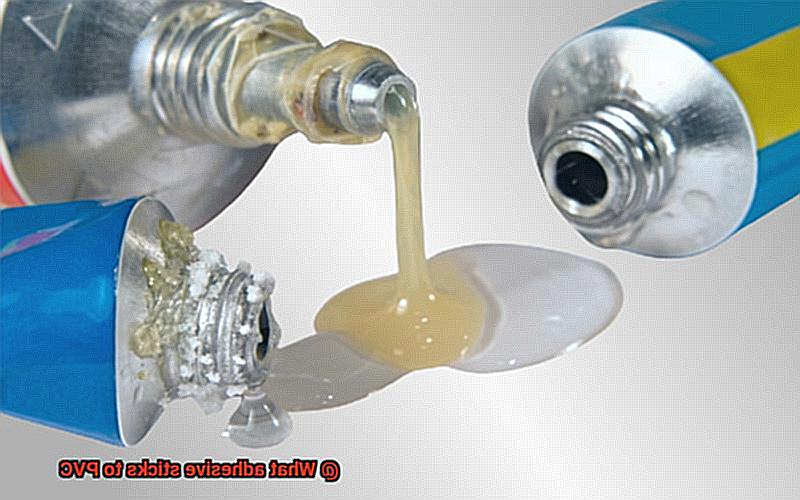
It is worth noting that different types of adhesives may have specific requirements for surface preparation. Some adhesives may require additional steps such as flame treating or using a specific type of primer. Therefore, carefully reading and following the instructions provided by the adhesive manufacturer is crucial to ensure proper surface preparation for bonding PVC.
Applying the Adhesive Properly
Grab your adhesive and let’s dive in.
Preparing the Surface:
To ensure a successful bond, proper surface preparation is key. Begin by cleaning the PVC with a mild detergent or rubbing alcohol to remove any dirt, grease, or oils that could hinder adhesion. Next, lightly sand the surface in a circular motion using fine-grit sandpaper. This creates a rougher texture that improves bonding. Remember to remove any dust generated during sanding.
Compatibility Test:
Before proceeding with the adhesive application, perform a small compatibility test on an inconspicuous area of the PVC. This will help determine if the adhesive works well with your specific type of PVC.
Applying the Adhesive:
Follow the manufacturer’s instructions carefully when applying the adhesive. Some adhesives require a thin layer on both surfaces being bonded, while others only need to be applied to one surface. Use a brush or applicator recommended by the manufacturer for an even and smooth application. Avoid excessive buildup of adhesive, as it can weaken the bond or cause unsightly drips.
Joining and Holding:
Once the adhesive is applied, firmly join the surfaces together and hold them in place for the recommended amount of time specified by the manufacturer. Applying light pressure or using clamps can help ensure a strong bond.

Curing Time:
Allow sufficient curing or drying time for the adhesive. The duration may vary based on the type of adhesive used, so refer to the manufacturer’s instructions for specific guidelines. It is crucial to avoid subjecting the bonded PVC to stress or heavy loads until the adhesive has fully cured.
Inspection and Finishing Touches:
After the adhesive has cured, carefully inspect the bond for any imperfections or areas that may need further attention. If necessary, apply additional adhesive or make any necessary adjustments before allowing it to cure again.
Proper Storage:
To maintain the effectiveness and extend the shelf life of your adhesives, store them according to the manufacturer’s instructions. This includes following temperature and humidity recommendations.
Safety First:
Always prioritize safety when working with adhesives. Protect yourself by wearing gloves and eye goggles to avoid skin contact or eye irritation. Additionally, work in a well-ventilated area to minimize exposure to fumes.
Testing the Adhesive
Look no further. In this article, we will guide you through the process of testing different adhesives to determine which ones are the best for bonding PVC effectively.
To begin, gather a variety of commonly used adhesives for PVC bonding. Consider options like epoxy, super glue, cyanoacrylate, PVC cement, and polyurethane adhesive. Having this assortment of adhesives at hand will allow you to conduct a comprehensive test.
Before diving into the testing process, it is crucial to properly prepare the PVC surface. Clean it thoroughly with a mild detergent and water to remove any dirt, grease, or debris that might interfere with the adhesion process. Ensure the surface is completely dry before applying any adhesive.
For a fair comparison between adhesives, use identical pieces of PVC for each test. This way, any differences in results are solely due to the adhesive’s performance and not the material itself. So grab those PVC pieces and let’s get started.
When it comes time to apply the adhesives, follow the manufacturer’s instructions carefully. Each adhesive may have specific application techniques such as spreading evenly or applying in thin layers. Paying attention to these details will ensure optimal bonding.
After applying the adhesive, allow sufficient drying or curing time as specified by the manufacturer. This can range from a few minutes to several hours, depending on the type of adhesive used. Remember, patience is key here – rushing the drying process could compromise the strength of the bond.
Once the drying or curing process is complete, it’s time for the moment of truth – evaluating the bond strength of each adhesive. Subject the bonded PVC pieces to various stress tests. Try pulling them apart with gradually increasing force or subjecting them to extreme temperatures to see how well the adhesive holds up.
During these tests, closely observe the bond’s integrity. Look out for any signs of failure, such as peeling, cracking, or weakening of the bond. These observations will help you determine which adhesive performs the best in terms of sticking to PVC.
But that’s not all. It’s important to consider other factors that might affect the adhesive’s performance in the long run. Factors like exposure to moisture or UV radiation can have a significant impact on bonding capabilities over time. So be sure to take these into account when evaluating your results.
To wrap things up, document the results of each adhesive test and provide a summary of your findings. This way, readers can easily understand which adhesive works best for their specific PVC bonding needs. And remember, what may work well initially may not hold up under certain conditions, so choose wisely.
Not Suitable for Bonding Other Plastics
When it comes to bonding different types of plastics together, not all adhesives are created equal. While plastics like PVC can be bonded successfully with various adhesives, it is crucial to select the right adhesive to ensure a strong and durable bond. In this article, we will explore why popular adhesives such as cyanoacrylate, epoxy resin, and solvent-based adhesives are not suitable for bonding PVC with other plastics.
Cyanoacrylate (Super Glue):
- Cyanoacrylate, commonly known as super glue, is a fast-drying adhesive that achieves excellent results on many surfaces.
- However, when it comes to bonding PVC with other plastics, cyanoacrylate falls short.
- The chemical composition of cyanoacrylate does not adhere effectively to the surface of PVC, resulting in a weak or ineffective bond.
- The lack of compatibility between cyanoacrylate and PVC makes it an unsuitable choice for bonding different types of plastics.
Epoxy Resin:
- Epoxy resin is renowned for its strength and durability when bonding various materials.
- Unfortunately, it may not deliver satisfactory results when used on PVC and other plastics.
- The chemical composition of epoxy resin does not adhere well to the surface of PVC, leading to a weak bond or even complete failure.
- Despite its effectiveness on other surfaces, epoxy resin is not recommended for bonding PVC with other plastics due to its limited compatibility.

Solvent-Based Adhesives:
- Solvent-based adhesives such as rubber cement or contact cement should be avoided when attempting to bond PVC with other plastics.
- These adhesives contain solvents that can cause damage or deformation to the surface of PVC.
- Additionally, their chemical composition may not provide a strong enough bond between PVC and other plastics.
- The potential for damage and weak bonding makes solvent-based adhesives unsuitable for joining different types of plastics.
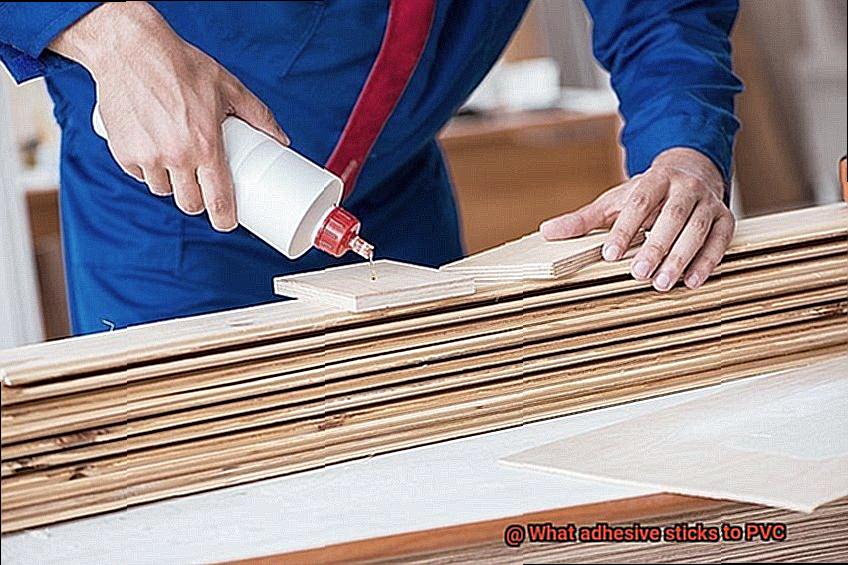
ZTTRSRUUDlY” >
Conclusion
When it comes to finding the right adhesive for PVC, you want something that will stick like glue. But not just any glue will do the trick. PVC is a tricky material to bond, thanks to its smooth and non-porous surface. That’s why you need an adhesive specifically designed to adhere to PVC.
Luckily, there are several options available that are up to the task. One popular choice is solvent-based adhesives, which work by dissolving the surface of the PVC and creating a strong bond when they dry. These adhesives are often used in plumbing applications and can provide a reliable and long-lasting hold.
Another option is epoxy resin, which is known for its exceptional bonding properties. Epoxy can form a strong bond with PVC, creating a durable connection that can withstand even the toughest conditions. Just make sure to choose an epoxy specifically formulated for use with PVC.
If you’re looking for a quick fix or temporary solution, cyanoacrylate adhesives, commonly known as super glue, can also be used on PVC. However, keep in mind that these adhesives may not provide as strong or long-lasting of a bond as other options.
No matter which adhesive you choose, it’s important to properly prepare the PVC surface before applying it. Clean the area thoroughly and roughen up the surface slightly to improve adhesion. And always follow the manufacturer’s instructions for best results.
So when it comes to sticking it to PVC, don’t settle for anything less than an adhesive that’s up to the challenge.

